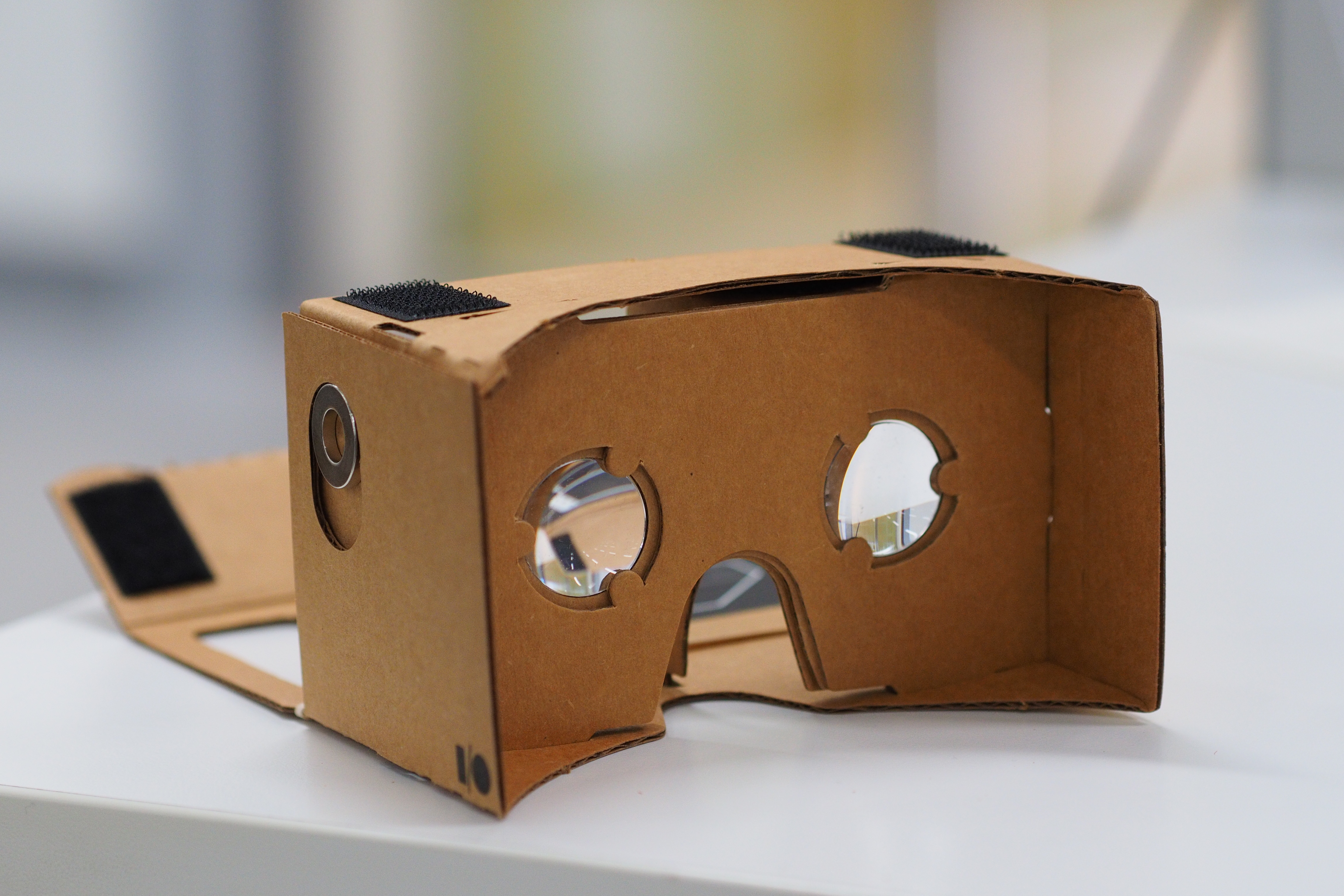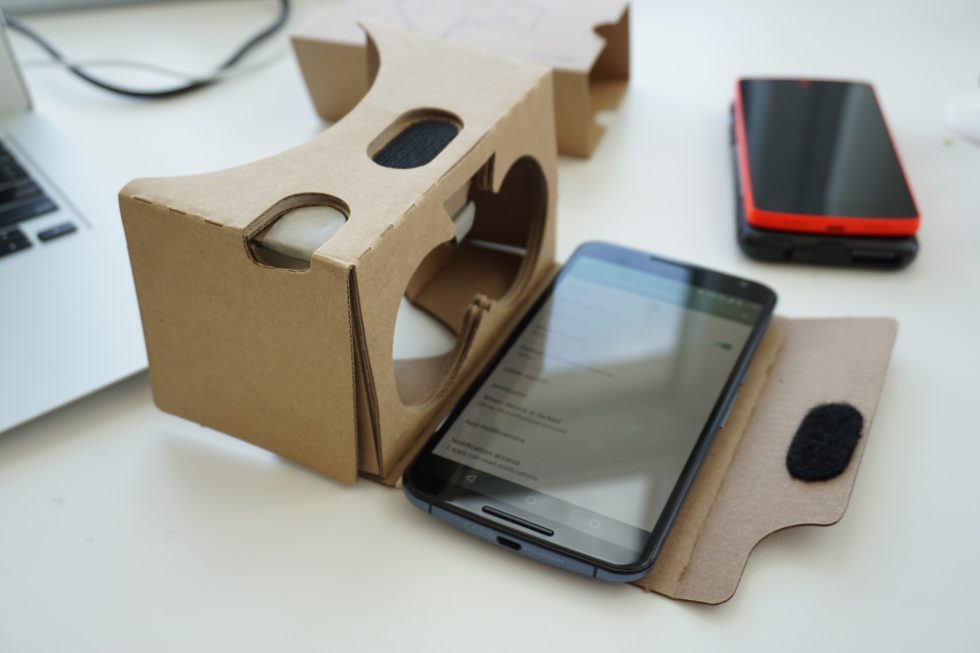Virtual Reality on the Cheap
 Image: Google Cardboard via Wikimedia Commons
Image: Google Cardboard via Wikimedia Commons
Remember when Google Cardboard was shown at last year's at I/O? This cheap virtual reality (VR) device made of cardboard and rubber bands turned out to be the big buzz for many people. Sure, it wasn't the fancy Google Glass, but it was Google.
It has been a year and is anyone really talking about Glass anymore? The official website is a dead end. Google Glass is wearable technology with an optical head-mounted display (OHMD). The idea was to experiment with a mass-market ubiquitous computer. It has information in a smartphone-like hands-free format and a wearer can interact with the Internet via natural language voice commands.
Google Glass sold for $1,500. In January 2015, Google announced that it would stop producing the Google Glass prototype but remained committed to the development of the product.
Cardboard, on the other extreme, is decidedly low-tech. It is cardboard, with lenses, a few patches of padding and Velcro, and a rubber band to keep it from sliding around. The expensive part is that you need to add your phone.

You download the Cardboard app from Google Play or Apple's App Store. There are a number of versions of Cardboard that you can buy now.
It is not meant to be Google Glass. It is closer to using Oculus Rift or Samsung's Gear VR.
You hold Cardboard up to your face like the old toy View-Master I had as a kid. Now, that old toy is coming back with some help from Google as part of Google's goal to expand Cardboard's use.
Though the term "virtual reality" has been around since 1938, the use of it to mean an artificial reality in a technological way is from the 1970s. One should not confuse virtual reality with augmented reality. VR and AR are similar in immersing the user, but AR users continue to be in touch with the real world while interacting with virtual objects around them. VR takes you out of the real world and immerses you in another world. Sometimes that immersion is so immersive that users get dizzy or nauseous, especially with software that emphasizes motion like the early days of wide screen cinema and 3D films.
The DIY nature of Cardboard is appealing and with a phone and an investment of $20 or $30, you can give a VR headset a try.
Trackbacks
Trackback specific URI for this entryThe author does not allow comments to this entry
Comments
No comments